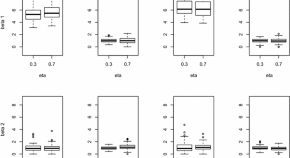Collection
Special Issue: Animal Movement Modeling"
- Submission status
- Closed
The study of individual animal trajectories is ancient, with a written record dating back more than 2000 years (Nussbaum 1978). The mathematics of trajectories also have a long history (Turchin 1988), but rigorous statistical methods development for animal trajectory data (i.e., telemetry data) only dates back approximately 50 years (e.g., Dunn and Gipson 1977). In more recent times, the technology to collect a massive amount and variety of telemetry data has increased dramatically, leading to unprecedented information on the spatial ecology of animal populations (Cagnacci et al. 2010; Kays et al. 2015). The sheer availability, variety, and volume of telemetry data sets present golden opportunities for the development of new statistical methods that can provide deeper, more meaningful inference about animal ecology. However, the volume, veracity, and velocity of the data coupled with the complexity of the trajectory processes and underlying animal behaviors themselves present formidable challenges for statisticians.
Whereas there are several examples of recent compilations pertaining to animal movement, including a new journal devoted to the subject, this special issue on Animal Movement Modeling is timely in that it captures an important subset of the new and innovative developments in statistical methodology and practice associated with the analysis of animal telemetry data. This special issue contains nine articles aimed at topics clustered naturally into two main categories: continuous-time models and discrete-time models. Most telemetry data associated with animal tracking involve a spatial component (geographic position) and a temporal component (temporal position). Associated statistical models for telemetry data usually are formulated in discrete time or continuous time in the way the temporal dynamics are expressed (McClintock et al. 2014). A third category that could be associated with either time formulation is the class of models for point processes (e.g., Johnson et al. 2013), but these methods (e.g., resource selection and step selection models) are not explicitly represented in this special issue. For more details on the use of point process models for animal telemetry data, see Hooten et al. (2017) and Hooten and Johnson (2017a) for overviews, and Johnson et al. (2013) and Brost et al. (2015) for specific examples.
This special issue contains a variety of approaches that address important issues within each type of time formulation, including multi-scale temporal processes, interactions among conspecifics, computational efficiency improvements using multistage modeling procedures, barriers and constraints to movement, intractable movement model likelihoods, and movement in patchy landscapes. The articles in this special issue involve applications to a diverse set of organisms including insects, mammals (both marine and terrestrial), reptiles, and fish.
Editors
-
Mevin B. Hooten
Colorado State University, USA
-
Ruth King
University of Edinburgh, UK
-
Roland Langrock
Bielefeld University, Germany
Articles (12 in this collection)
-
-
Guest Editor’s Introduction to the Special Issue on “Animal Movement Modeling”
Authors
- Mevin B. Hooten
- Ruth King
- Roland Langrock
- Content type: Introduction
- Published: 07 August 2017
- Pages: 224 - 231
-
A General Approach to Model Movement in (Highly) Fragmented Patch Networks
Authors (first, second and last of 4)
- Juan Manuel Morales
- Agustina di Virgilio
- Otso Ovaskainen
- Content type: OriginalPaper
- Published: 01 August 2017
- Pages: 393 - 412
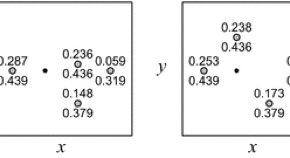
-
Reflected Stochastic Differential Equation Models for Constrained Animal Movement
Authors
- Ephraim M. Hanks
- Devin S. Johnson
- Mevin B. Hooten
- Content type: OriginalPaper
- Published: 20 July 2017
- Pages: 353 - 372
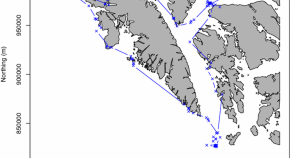
-
Animal Movement: Statistical Models for Telemetry Data by Hooten, Johnson, McClintock and Morales
Authors
- Jason Matthiopoulos
- Content type: Book Review
- Published: 07 July 2017
- Pages: 423 - 425
-
Bayesian Inference for Multistate ‘Step and Turn’ Animal Movement in Continuous Time
Authors
- A. Parton
- P. G. Blackwell
- Content type: OriginalPaper
- Open Access
- Published: 19 June 2017
- Pages: 373 - 392

-
Hierarchical Nonlinear Spatio-temporal Agent-Based Models for Collective Animal Movement
Authors
- Patrick L. McDermott
- Christopher K. Wikle
- Joshua Millspaugh
- Content type: OriginalPaper
- Published: 19 June 2017
- Pages: 294 - 312
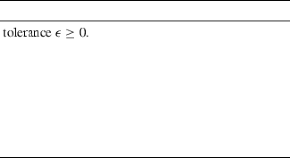
-
José-María Montero, Gema Fernández-Avilés, and Jorge Mateu: Spatial and Spatio-Temporal Geostatistical Modeling and Kriging
Authors
- Christopher K. Wikle
- Content type: Book Review
- Published: 14 June 2017
- Pages: 420 - 422
-
Selecting the Number of States in Hidden Markov Models: Pragmatic Solutions Illustrated Using Animal Movement
Authors (first, second and last of 4)
- Jennifer Pohle
- Roland Langrock
- Niels Martin Schmidt
- Content type: OriginalPaper
- Published: 05 June 2017
- Pages: 270 - 293
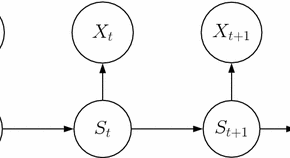
-
Incorporating Telemetry Error into Hidden Markov Models of Animal Movement Using Multiple Imputation
Authors
- Brett T. McClintock
- Content type: OriginalPaper
- Open Access
- Published: 02 June 2017
- Pages: 249 - 269
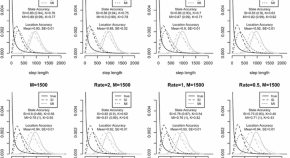
-
Multi-scale Modeling of Animal Movement and General Behavior Data Using Hidden Markov Models with Hierarchical Structures
Authors (first, second and last of 7)
- Vianey Leos-Barajas
- Eric J. Gangloff
- Juan M. Morales
- Content type: OriginalPaper
- Published: 12 May 2017
- Pages: 232 - 248

-
Erratum to: On Estimation and Selection of Autologistic Regression Models via Penalized Pseudolikelihood
Authors (first, second and last of 5)
- Rao Fu
- Andrew L. Thurman
- Jun Zhu
- Content type: Erratum
- Published: 04 May 2017
- Pages: 413 - 419
